A Quick and Classic, Blue Jewelry DIY
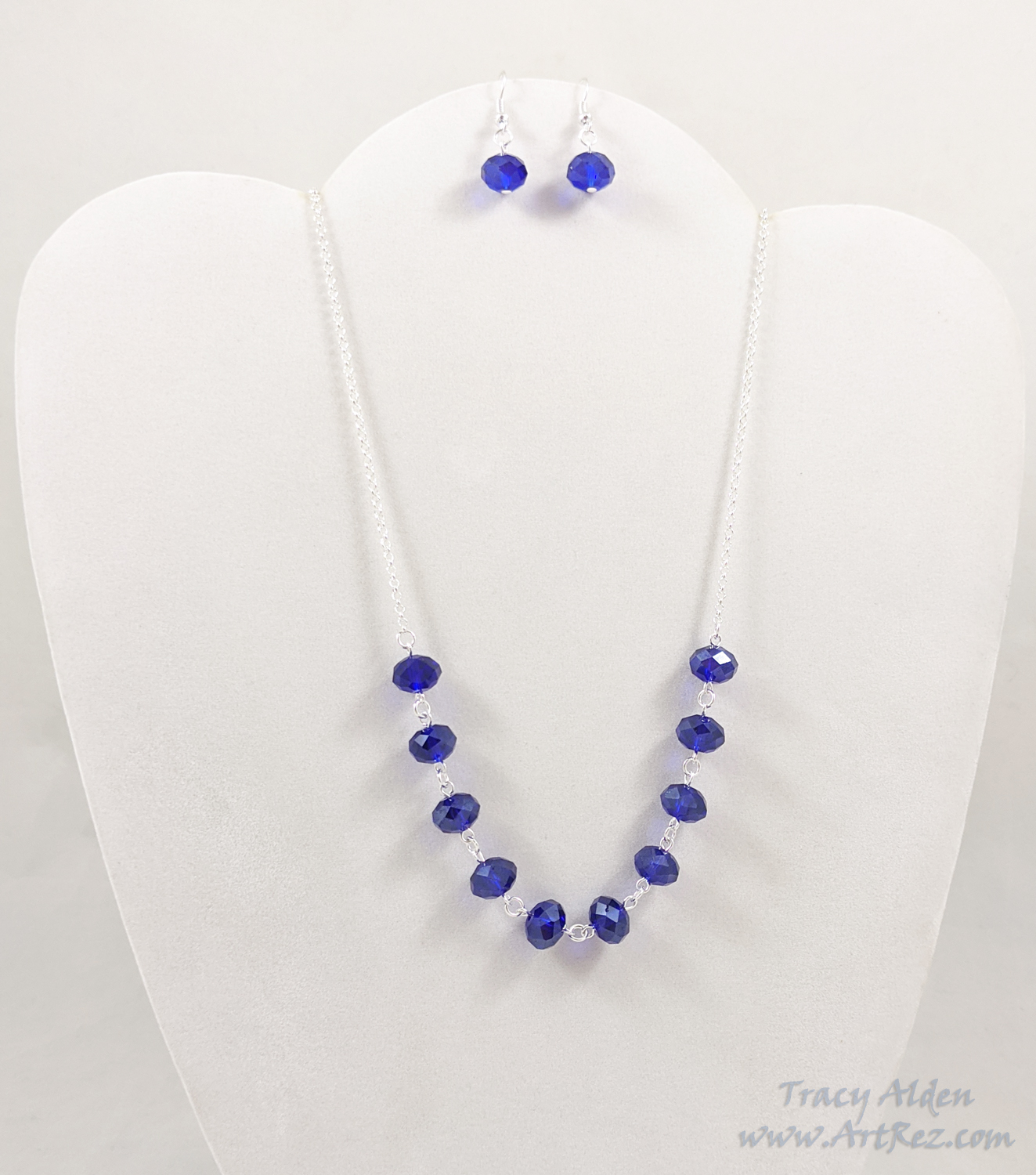
Color forecasts and trends help all facets of the art industry to be inspired, create, and design. This year Pantone announced their new color of the year, “Classic Blue”. A color that to me brings to mind the deep rich hues of lapis lazuli stone, twilight sky and dark blue iris blooms. Being that dark and intense blues are some of my favorite colors to work with, I was inspired into incorporating this color into a beginner jewelry project.
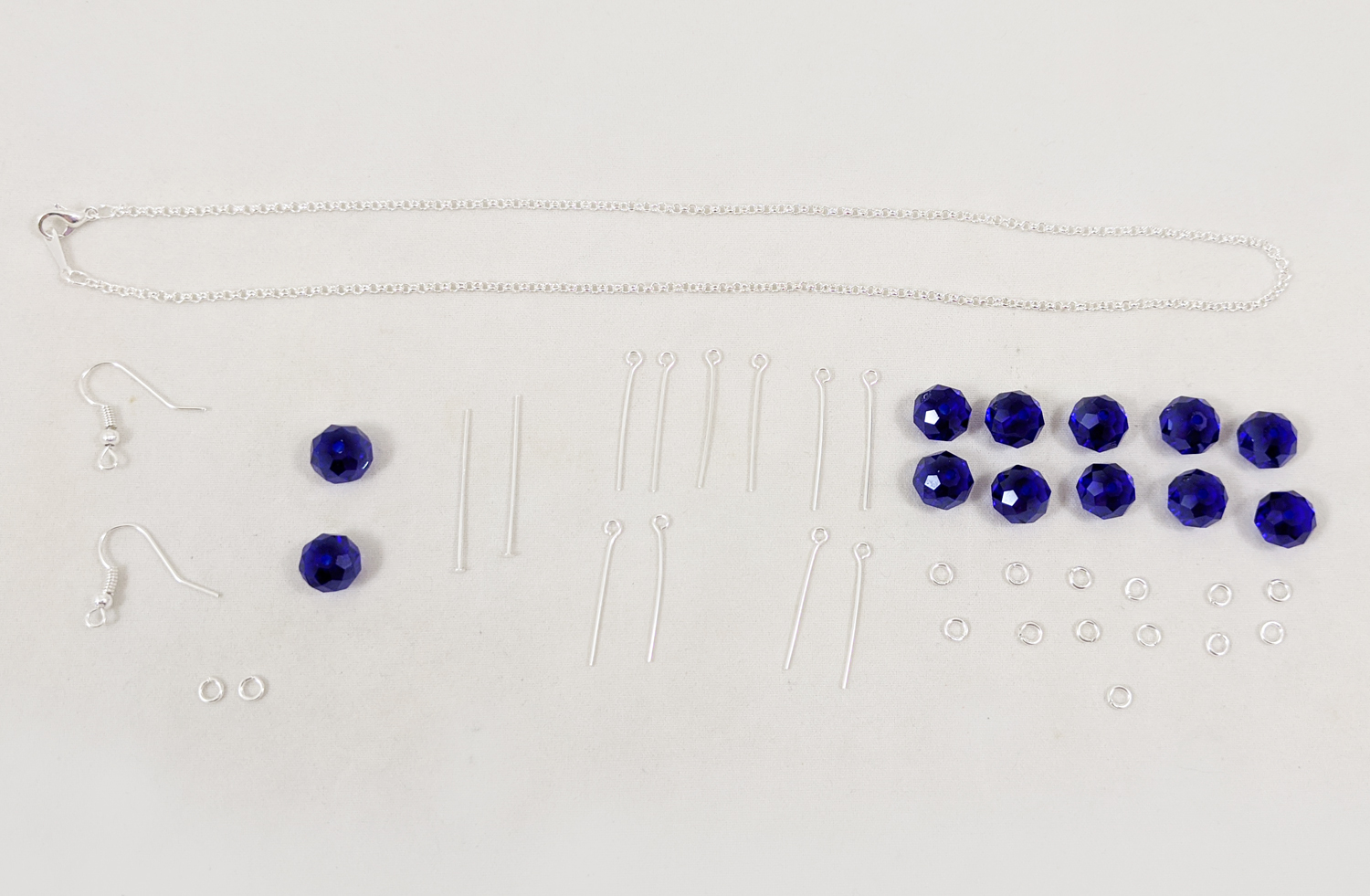
Supplies:
1 Silver plated round cable chain necklace, 16 inch
2 Fishhook earwires
10 Eye pins, silver-plated brass, 1 inch
2 Head pins, silver-plated brass, 1 inch
13 Silver Plated 4mm jumprings
12 Deep Blue 8x6mm faceted crystal rondelles
2 chain nose pliers
1 round nose pliers
1 wire cutter
Starting with the earrings first, carefully thread one Deep Blue 8x6mm faceted crystal rondelle on a 1-inch silver plate head pin. Using the jewelry wire cutters, trim off the excess wire of the head pin.

Using round-nose pliers carefully bend the head pin wire slightly towards you before starting the loop. This will ensure you have a more rounded and centered loop.

Curl over the wire into a complete loop with the round-nose pliers by rotating your wrist forward. Close the loop, snug to the bead.

Using two pairs of chain nose pliers start twisting* the jump ring until the required opening is achieved. Thread both the head pin with bead and the fish hook earring wire on the open jump ring and close the jump ring with the two pairs of flat nose pliers by twisting the jump ring closed.
*Do not pull open jump rings as this will distort them.
Once the jumpring is closed you should have one earring finished. Repeat this process to create the second earring.
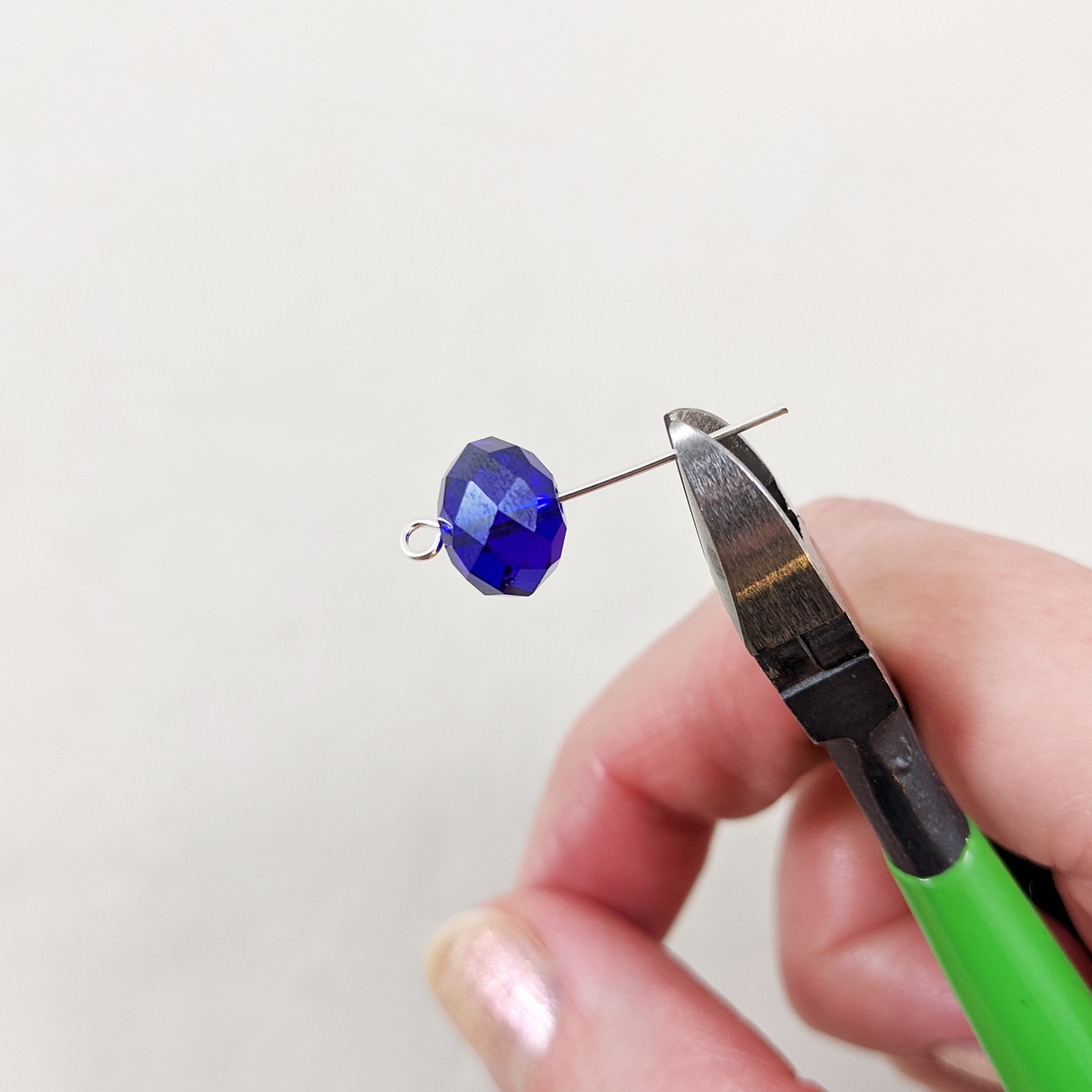
Now onto the necklace. Carefully thread one Deep Blue 8x6mm faceted crystal rondelle on a 1-inch silver plate eye pin. Using the jewelry wire cutters, trim off the excess wire of the head pin.
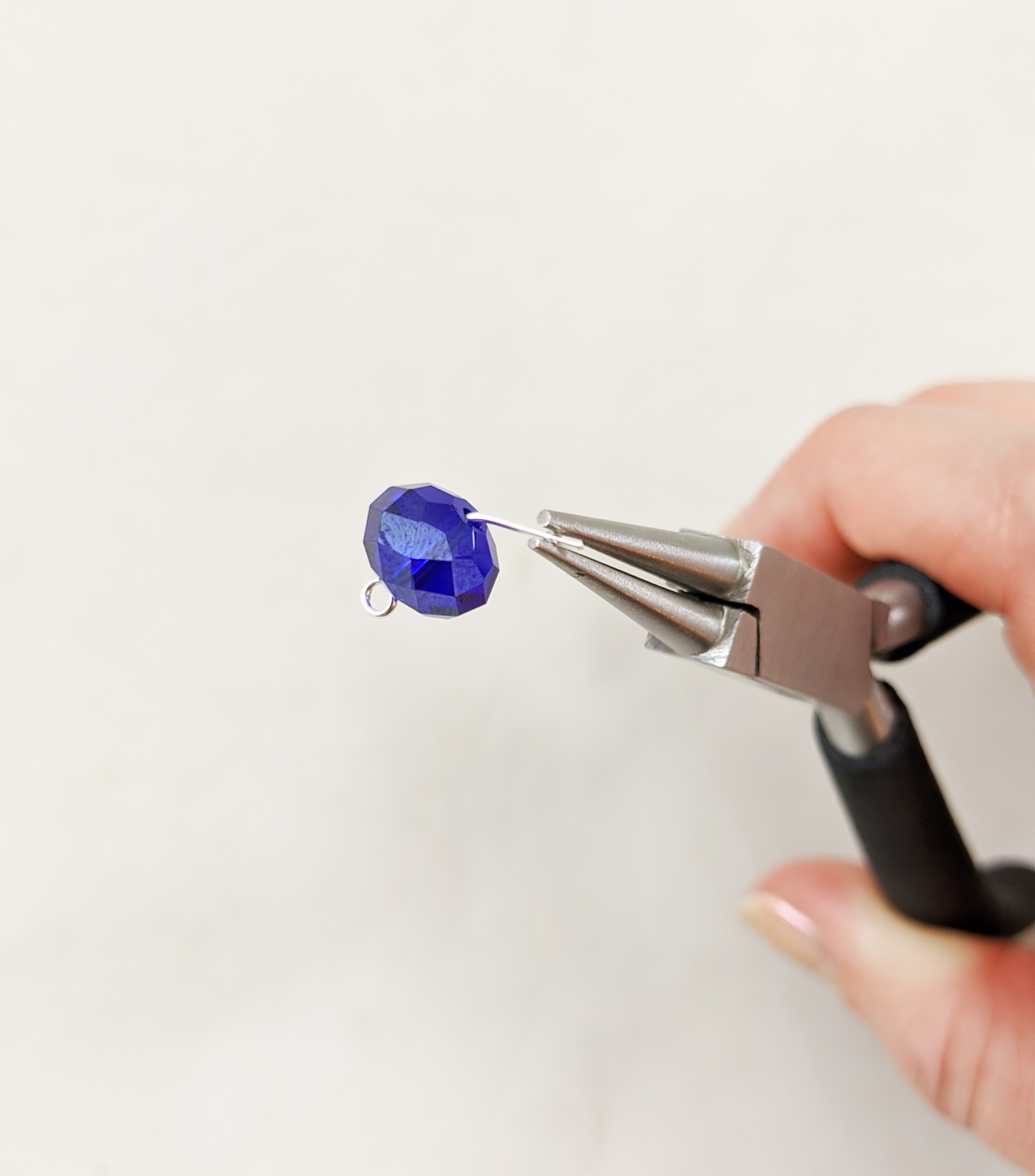
Using round-nose pliers carefully bend the head pin wire slightly towards you before starting the loop.
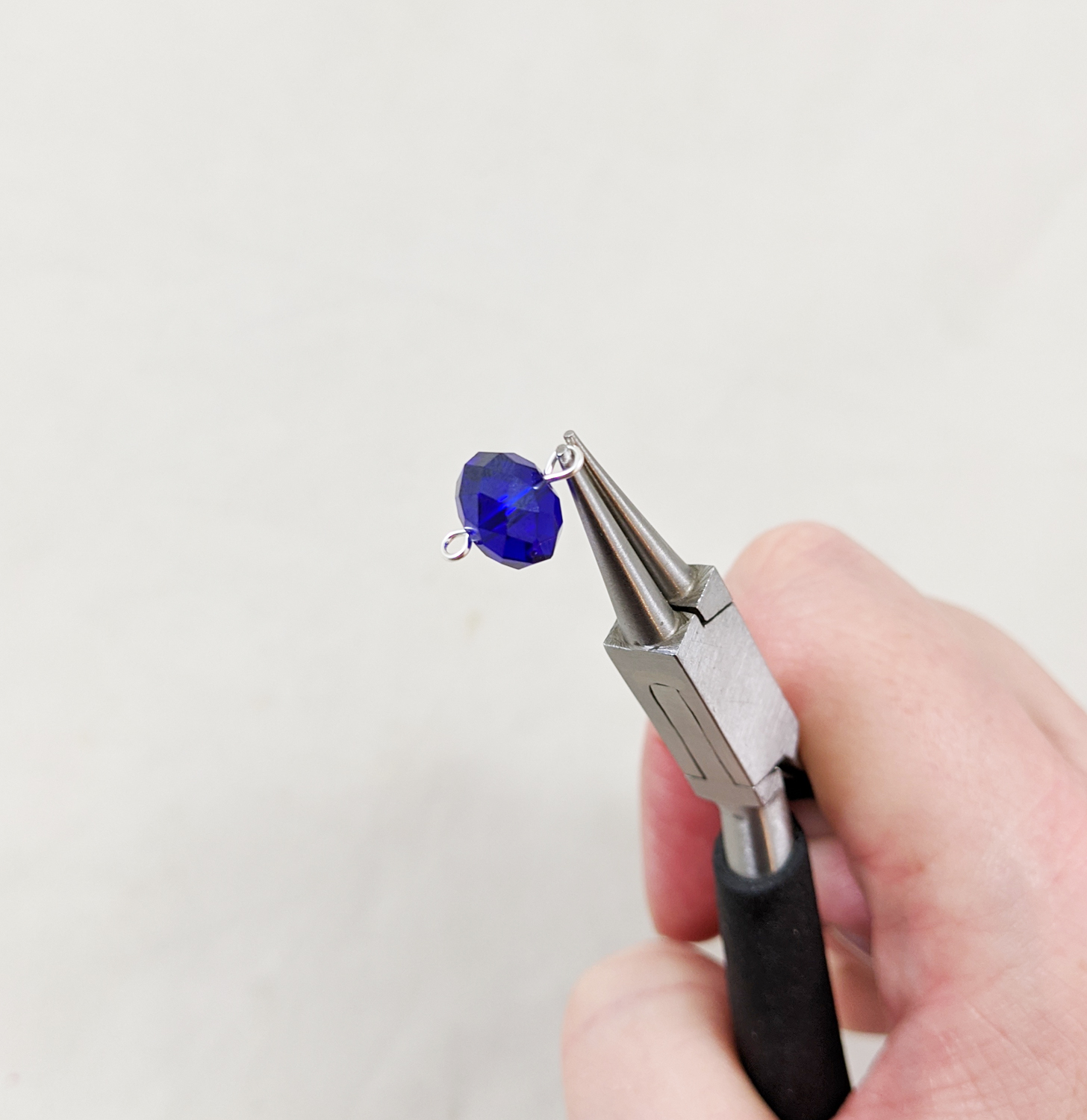
Curl over the wire into a complete loop with the round-nose pliers by rotating your wrist forward. Close the loop, snug to the bead. Repeat this process for the 9 other Deep Blue 8x6mm faceted crystal rondelles.

Using two pairs of chain nose pliers start twist the jump ring until the required opening is achieved. Thread both two crystal beads on finished eye pins on the open jump ring and close the jump ring with the two pairs of flat nose pliers by twisting the jump ring closed.
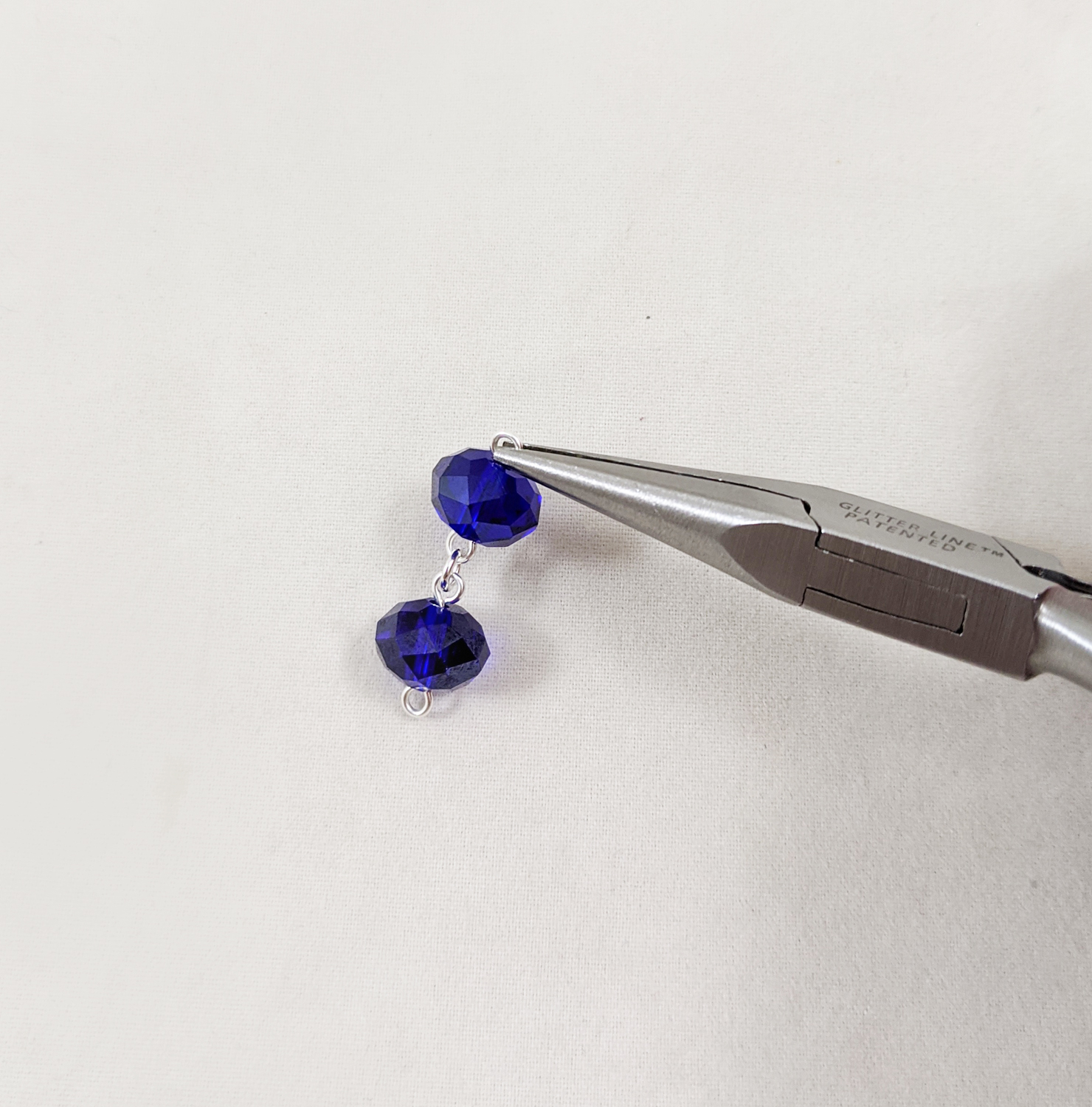
By attaching these two eye pins with beads together you have created your first two segments of your necklace.

Repeat the process of connecting each crystal bead on a eye pin to the next until you have used all 10 beads to create a length of chain.
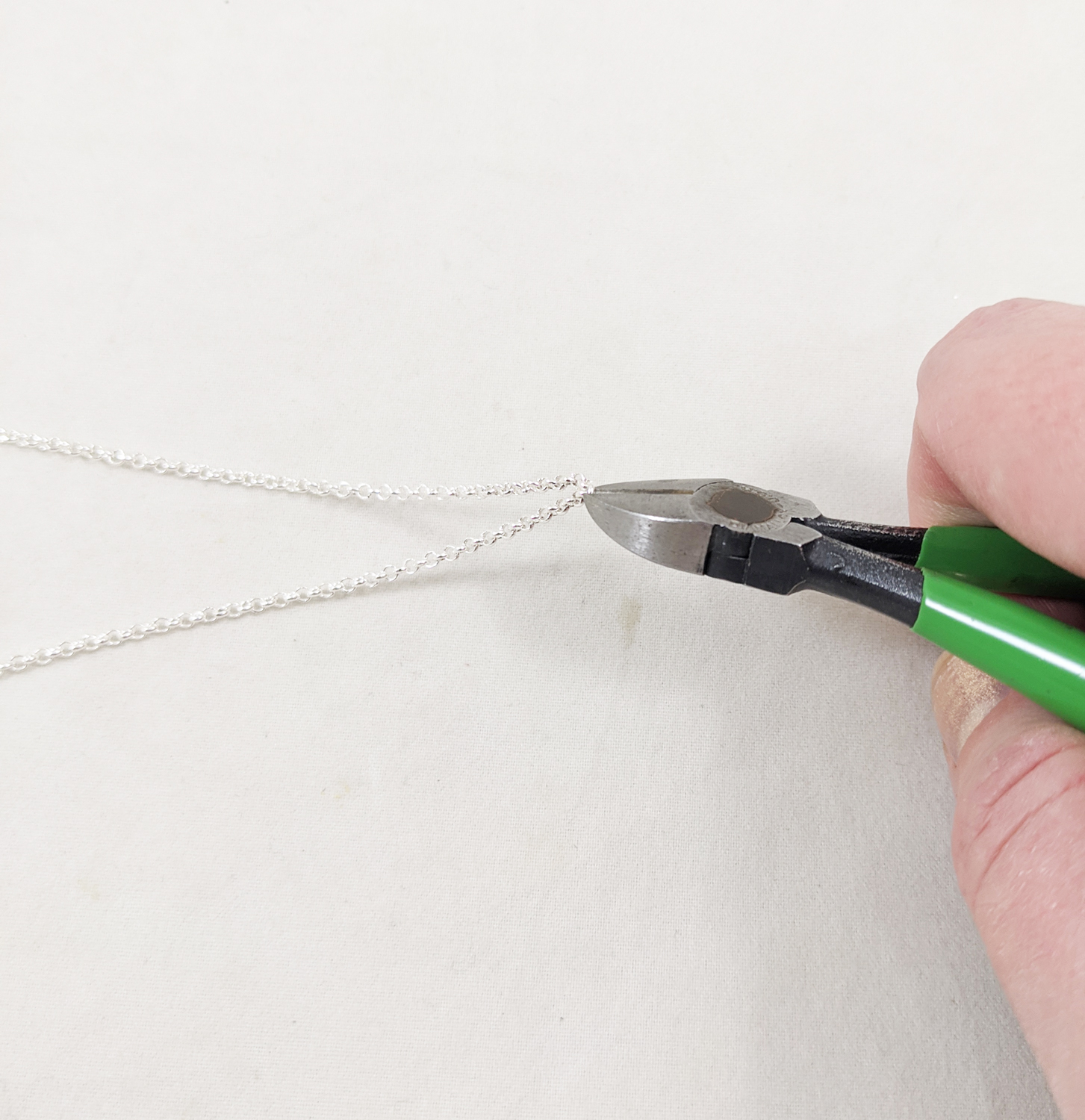
Lay the 16 inch Silver plated round cable chain necklace flat and carefully cut one segment, with wire cutters, to separate the necklace into two pieces.

Using two pairs of chain nose pliers open one jump ring and thread both crystal bead chain to end of one of the chain pieces. Close the jump ring with the two pairs of flat nose pliers by twisting the jump ring closed.

Repeat this process on the other side of the crystal chain.
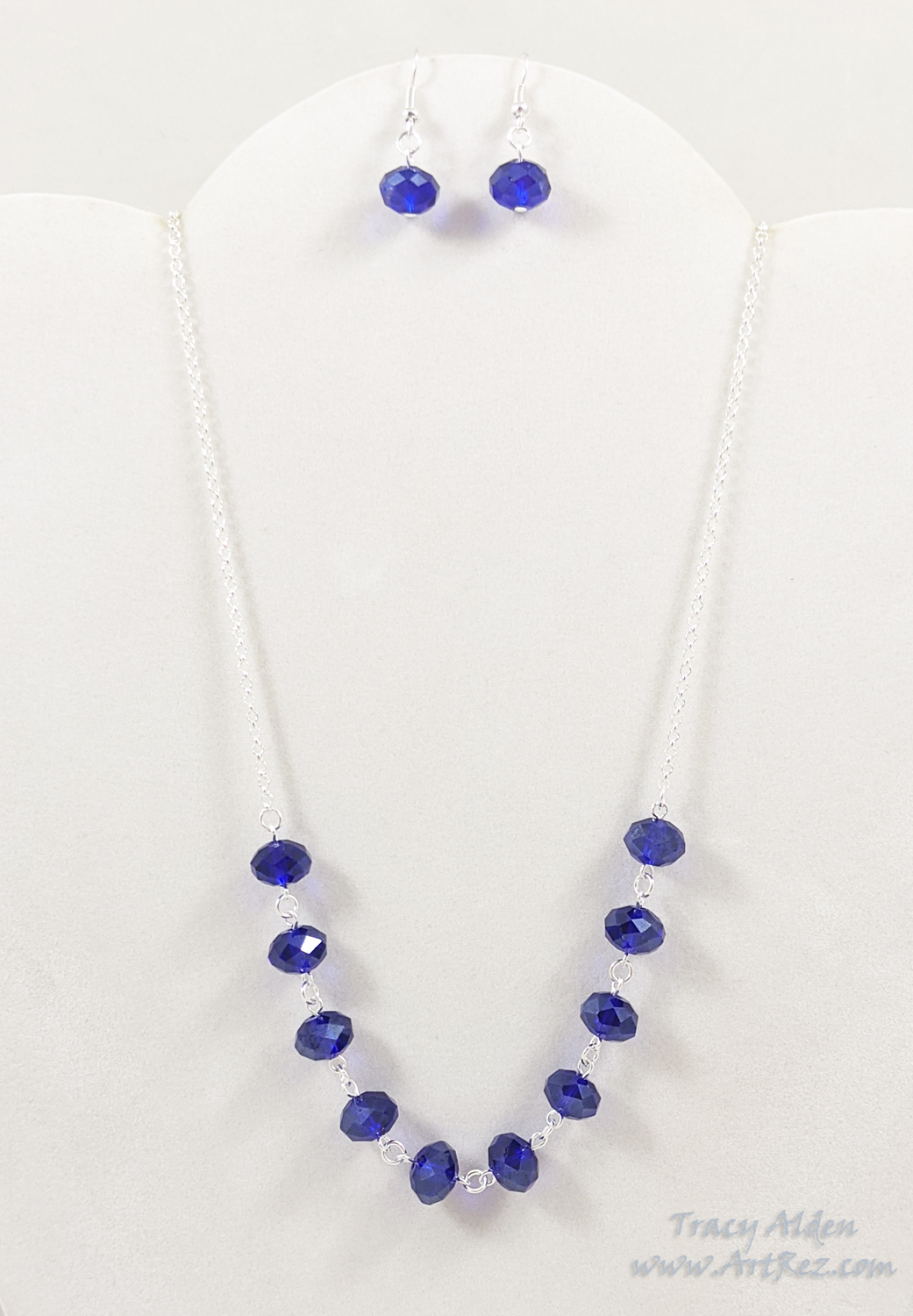
This quick and easy, yet in style and on trend jewelry makes a perfect addition to any wardrobe.
Until Next Time, Safe Travels!A Melt and Pour Soapy First Try…

Hello! I have been a wee bit quiet lately taking care of family and doing some major home overhaul but here I am back again with some crafty goodness. What better way to get back into the creative swing of things other than trying a new craft I had never made before! Melt and Pour soaps have been around for some time but I honestly thought they might be a bit much to try. The closest I had gotten to melt and pour products was making candles with my mother as a child, so this was going to be a learning curve. Thankfully it ended up being a lot easier than I thought and I might have found a new crafting medium to work in!
At The Creativation Trade Show 2018, held by Association For Creative Industries or AFCI, I saw the Life of the Party booth showcasing their soap products. At first I was just excited with their lovely line of molds, being not only safe for soap but can be used for candy and resin. Their line of soap products can be found at most craft stores and online (don’t forget to use your store coupons). Watching their demos I saw how their Melt and Pour Soap base kits could be used, also how to be more creative by using their premade soap bases with additional scents, dyes, herbs and exfoliates. I expressed my concern with a few allergies I have to certain plants and chemicals so the kind ladies at the booth gave me some kits to try out that did not contain my allergens.
Fast forward to the end of Summer, while cleaning and sorting my craft supplies I find these kits collecting dust on one of my craft tables. I needed to rectify this and start trying to make some soap!
In addition to the soap making kits I used:
1 Small Spritz Bottle filled with rubbing alcohol
1 Microwave Safe Glass Measuring Cup
1 Soap Cutting Blade
1 Pack Wood Craft Sticks
Additional Fragrance and Essential Oils
Dried Herbs from my garden
Food Grade Spices
The first kit I tried out was the Life of the Party Botanical Soap Making Kit*. I picked this kit as my first try as it seemed the most simplistic of the kits, with smaller soap bar molds and a more mainstream soap base.
It comes with:
16 oz (1lb) White Suspension Soap
3 – 0.20 fl oz blendable fragrances Cool Citrus, Warm Vanilla, Fresh Herbal
0.13 fl oz rose color
0.35 oz apricot seeds
1- 4 cavity mold 1 loofah 1 instruction sheetMake sure to read the kit instructions fully before attempting to create any soap.

Following the instruction sheet included with the kit I cut the soap brick into cubes.
I would describe the texture of the White Suspension Soap as something akin to the old style “skin care bar” soap sold in the U.S. for the last hundred or so years. It was a bit stiff to cut through with a butter knife so I went ahead and tried Life of the Party Soap Cutter Straight Blade *. While a knife can do the same job, I find using the cutter allows me to cut easier and quicker and it is kinder on achy hands.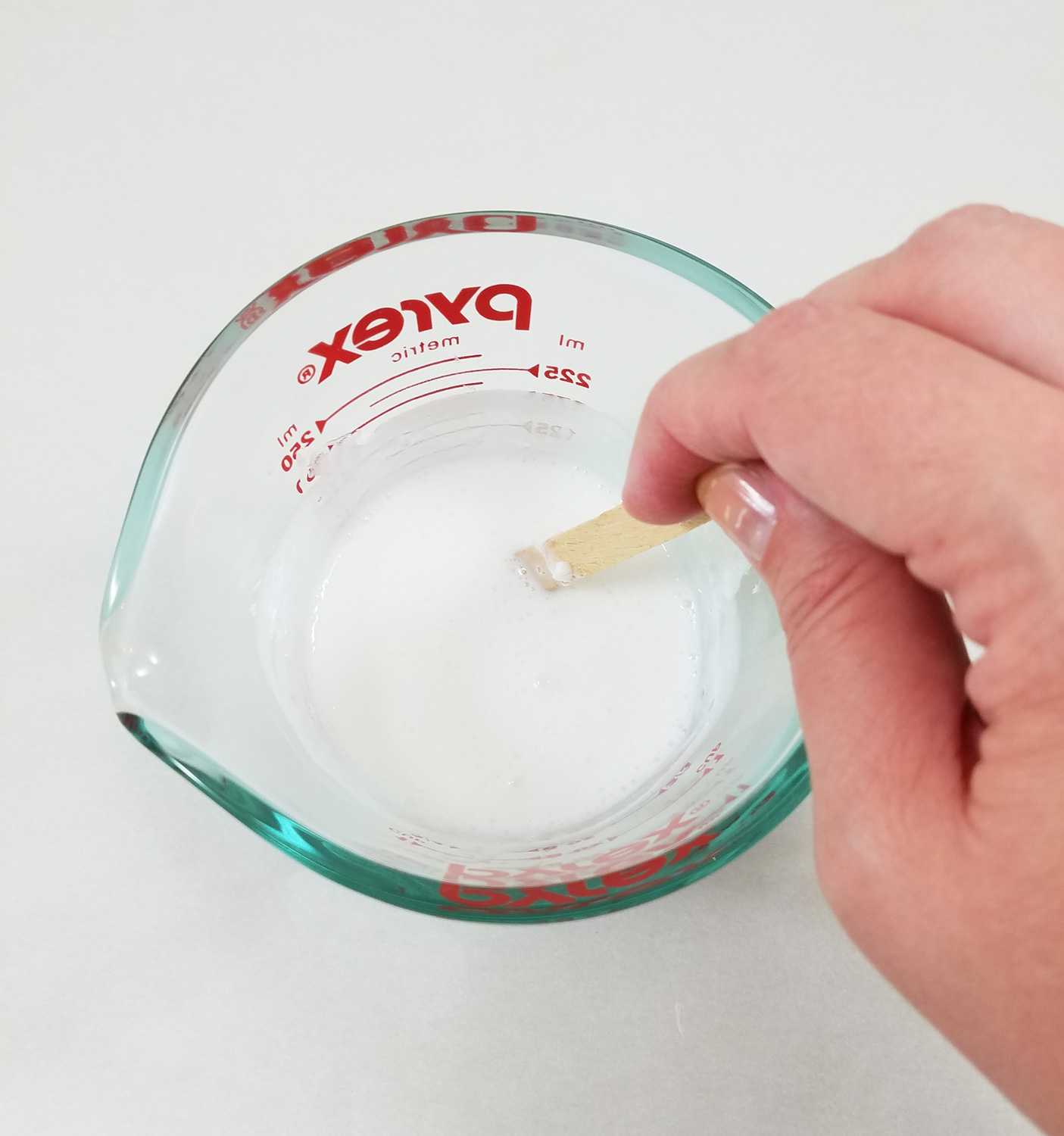
I put the soap cubes into a microwave-safe measuring cup and put it in the microwave for 20 second intervals, stirring the cubes until melted. Be careful with this step as it is easy to overheat the soap and the melted soap is very hot.
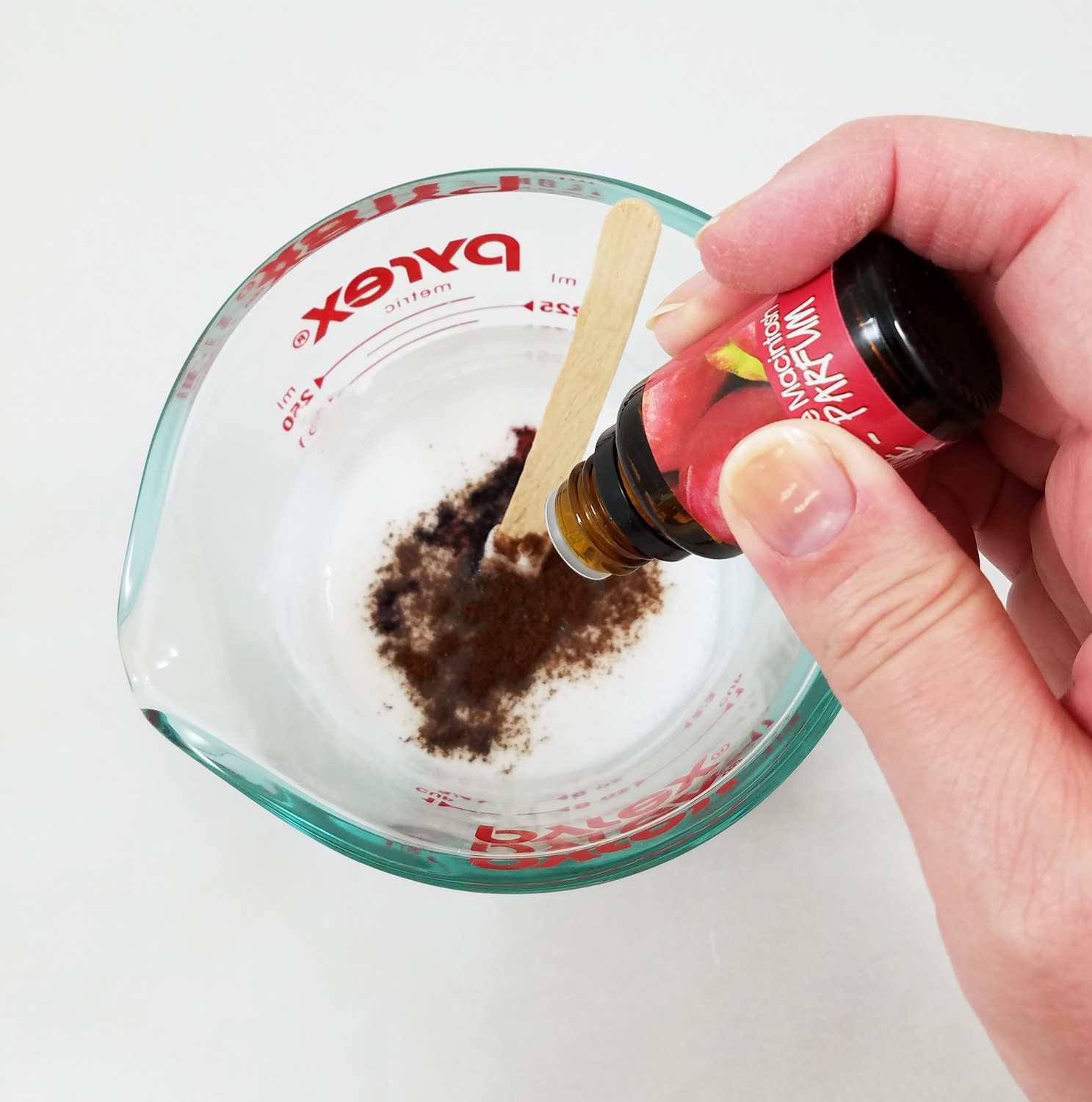
I wasn’t overly fond of the other two fragrances that came with the kit but I did like the Warm Vanilla scent. So I decided to add ground cinnamon, the Warm Vanilla and Life of the Party Macintosh Apple Fragrance * , giving it a scent somewhat akin to an apple pie. Keep in mind the more drops of fragrance or oils you use the stronger the scent will be.
I added in the apricot seeds from the kit as an exfoliant and a few drops of the rose color dye to tint the soap a pale pink. At one point I noticed the soap started to get cool and harden so I popped it back in the microwave for 20 seconds and then stirred well.
Instead of leaving the loofah whole I cut it up so I could put portions into each soap cavity. This would make these not your normal soap bars but indulgent foot scrubbing soap bars. The hot liquid soap saturated the loofah and filled each mold cavity.
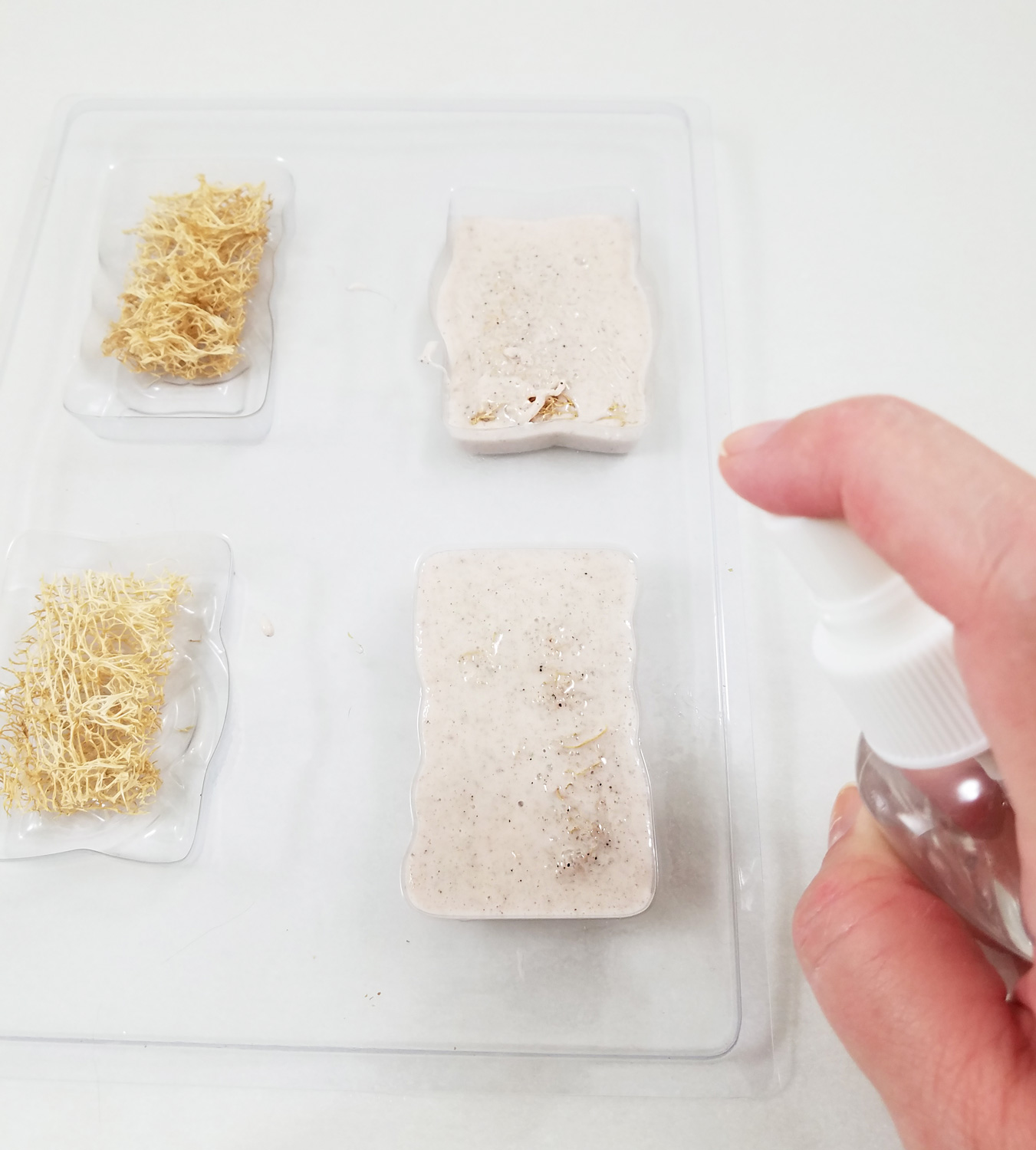
Before the soap cooled I spritzed the soap in the mold with the rubbing alcohol to pop the bubbles that formed in the pouring process. The instructions said to let the soap bars cool and sit still for 30-40 minutes, but since I live in a warm climate I had to let the soap sit for close to 1 1/2 before moving and demolding. You might find that there will be some variance in heating and cooling time depending on what climate you live in.

To release the soap from the molds I had to flip over the mold onto a flat surface and apply pressure with my thumbs to the back of the mold. The soap base being a firmer soap, it required a decent amount of pushing and easing the soap out of the mold.

Once I got the soap out of the molds I was really surprised how nicely the soap captured the delicate knotwork pattern of the mold. The instructions said to wrap the soaps individually in plastic wrap and/or scrapbook paper to retain the scent and freshness of the newly made soap.

The second kit I tried was the Life of the Party Mens Shave & Bar Soap Making Kit *. This kit had a shea butter soap base, old timey soap mold and shave elements.
It comes with:
24 oz (1.5 lb) shea butter soap
0.27 seafoam color
0.27 fl oz cedar wood mint fragrance
1 shave brush
1 soap tin
1- 4 cavity mold
1 instruction sheet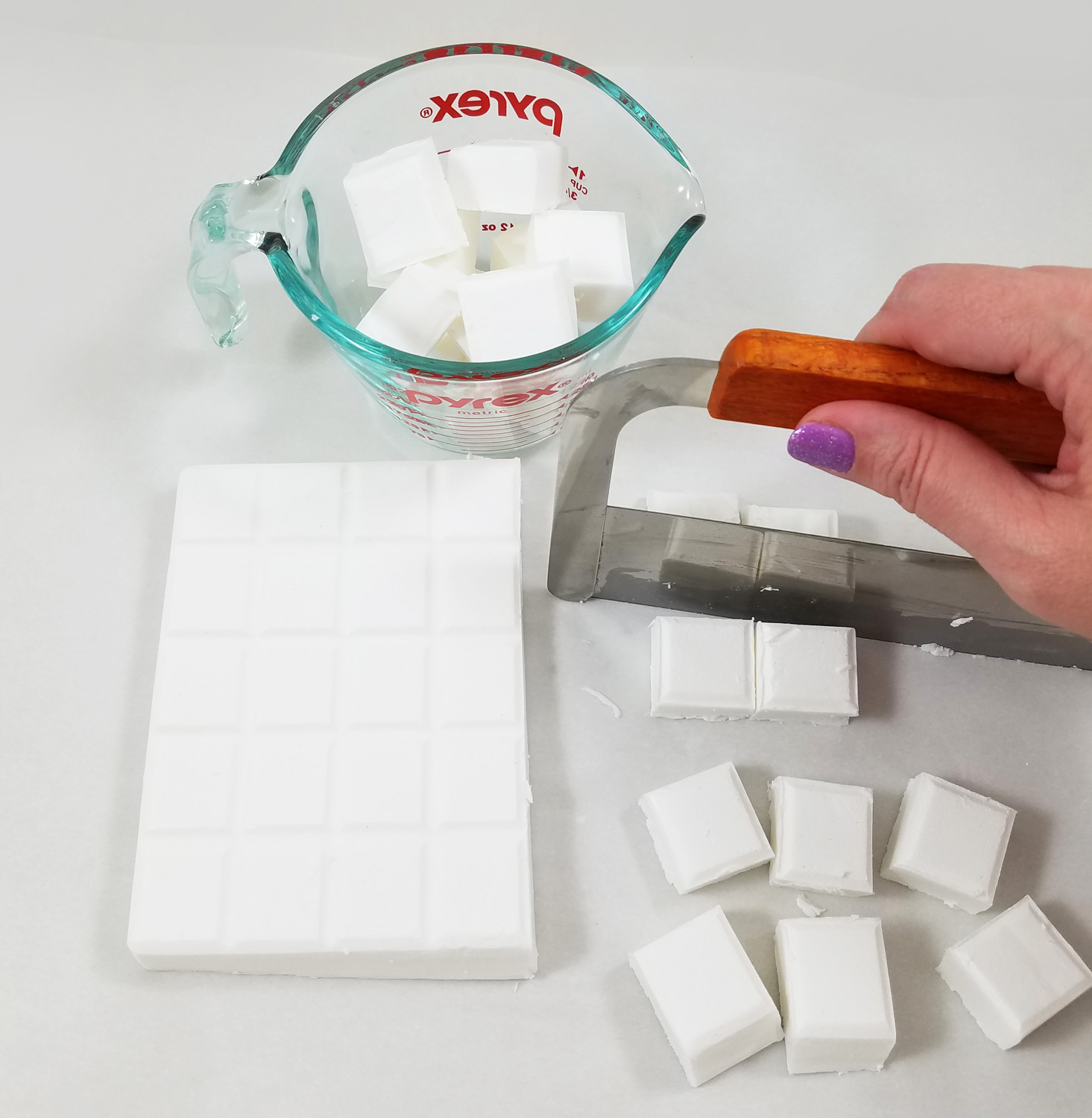
Once again following the instruction sheet included with the kit I cut the soap brick into cubes. My personal opinion is that the Shea Butter Soap Base is a better soap than the White Suspension Soap. It is very smooth, a bit soft and feels great on the skin, it does not remind me of a mass produced soap. It is more along the lines of specialty milled soaps and gift shop soaps. It also seems to melt faster and stay hotter longer when heated in the microwave.
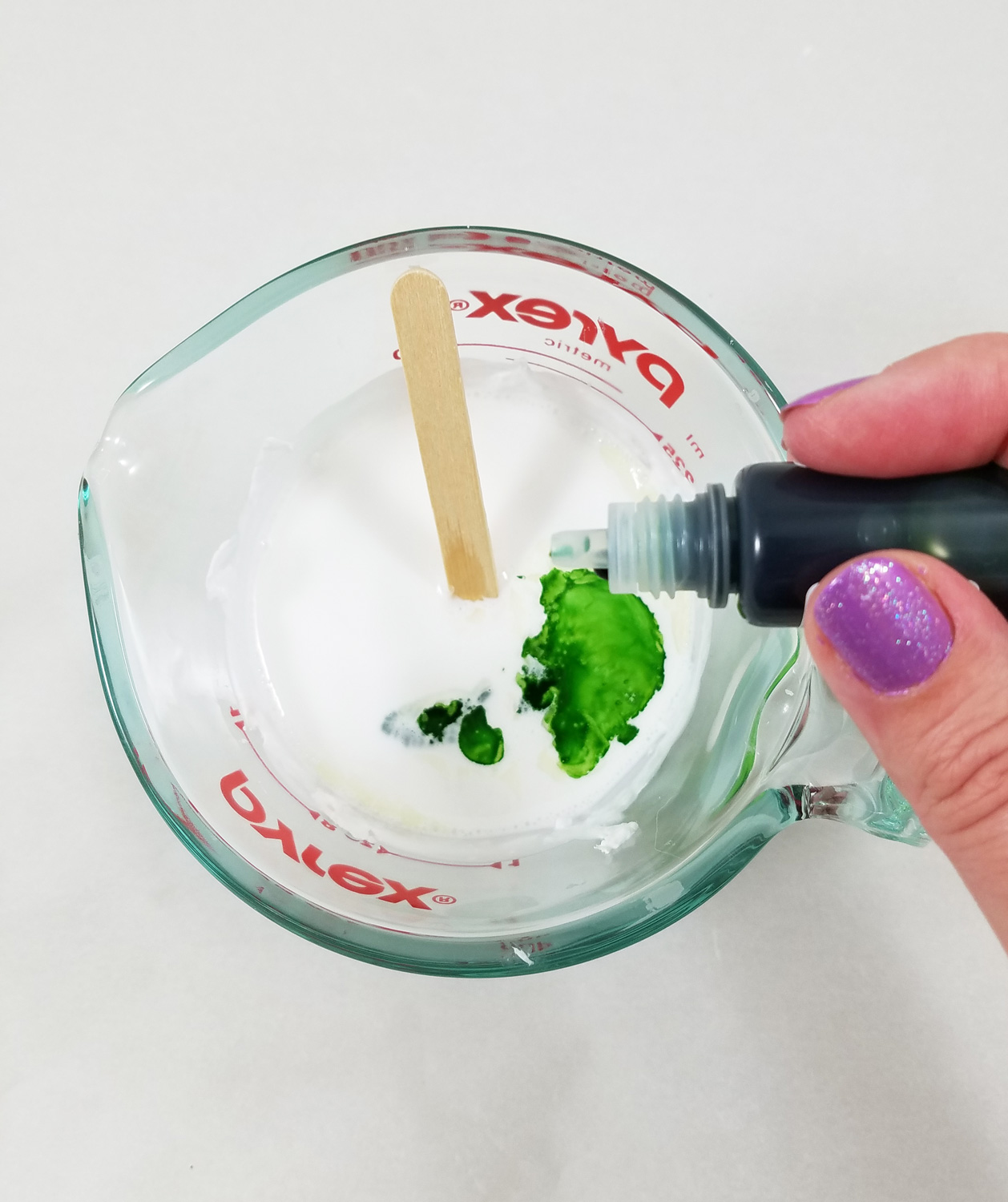
I got a bit more creative in the fragrance department because the cedar wood mint fragrance included in the kit was kinda weird. I had my husband smell it and he felt it smelled rather accurately like “generic men’s body spray”. So I decided to play fragrance mad scientist and break out some of my essential oils. I mixed together several small scent batches (before melting the soap) until I found two blends that were more unique.
Clean Forest Scent
Cedarwood Essential oil
Peppermint Essential oil
Life of the Party Eucalyptus Mint fragrance *
This blend works for the soap and the shave bars as it lathers smooth without exfoliant.Spice Route Scent
Tangerine Essential oil
Life of the Party Eucalyptus Mint fragrance
Ground Cloves (gives a nice scent and acts as a exfoliant)
Dried mint from my garden (gives a nice scent and acts as a exfoliant)
This blend works more as a soap bar only because of the added exfoliant.Once my scents were ready I split the soap base into two batches. Each batch got a different fragrance and different amounts of the seafoam green dye.
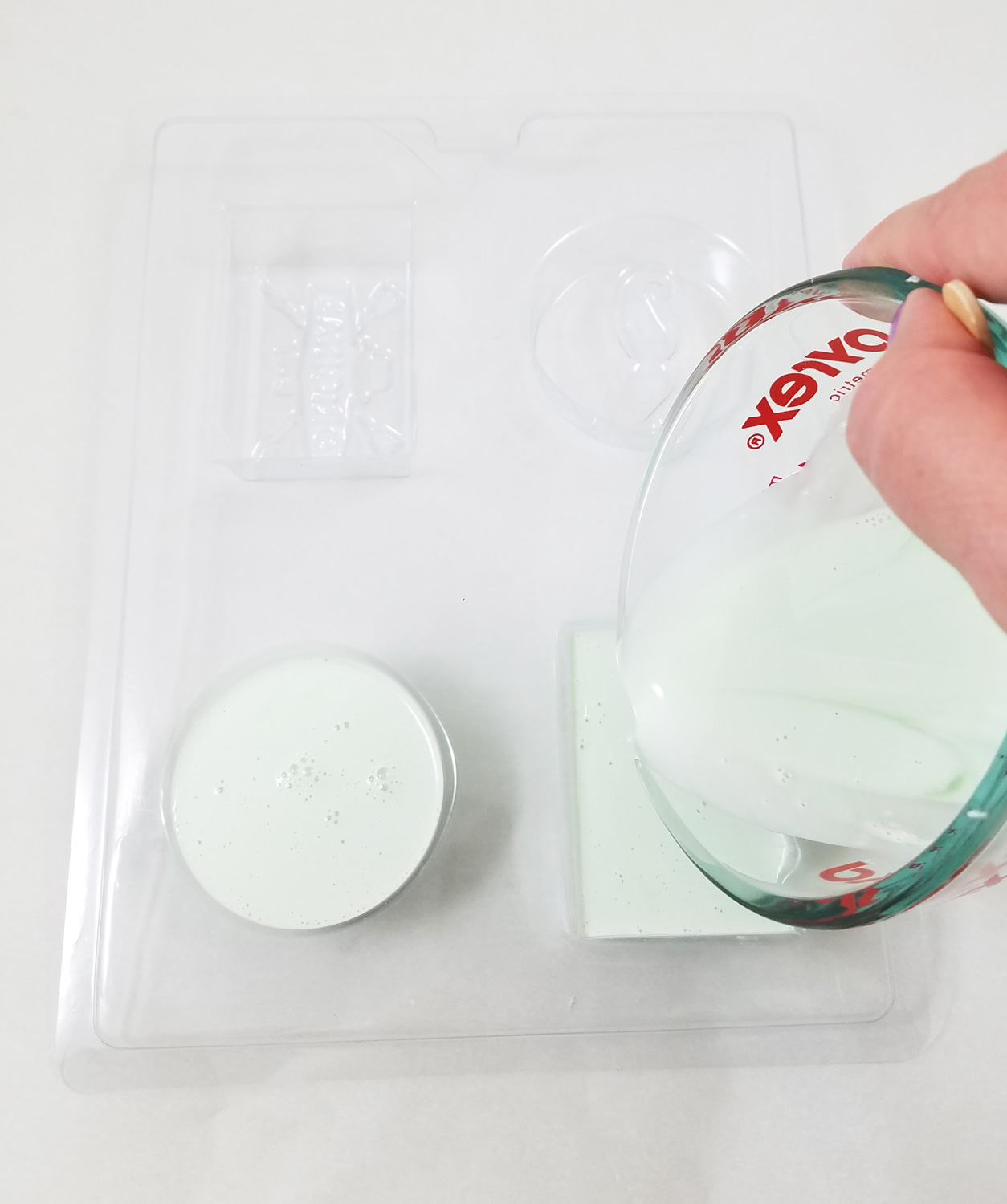
The shea butter soap base flows even smoother into the mold cavities and cools a little slower. I let them cool completely and popped them out of the molds as per the instructions.

Once again the soap took on the delicate details of the mold. The shea butter makes these bars a bit softer so it is important to wrap them up so they do not get marred. The shaving soap puck lathered up perfect in the tin with the use of the shave brush.
Overall I love both of these kits but the shea butter base is my favorite soap base and I think a bit easier to work with. I am also pretty fond of the molds and can see them being used for candy and resin projects easily with the right mold release. While the scents were not my favorite aspect of the kits, everyone’s sense of smell is different, so someone else might love them. I did find rather enjoyable the ease of making and adding other fragrances, herbs, spices and exfoliants. As for my sensitive skin not one of the soap bars have caused me to have an allergic reaction.
What interesting soaps might you create? 🙂
Until Next Time, Safe Travels!
This post contains affiliate links. To read my full disclosure, click here. All affiliated links will have a red asterisk, such as this*.
Upcycle Plastic Skulls into Ghoulish Glam Decor
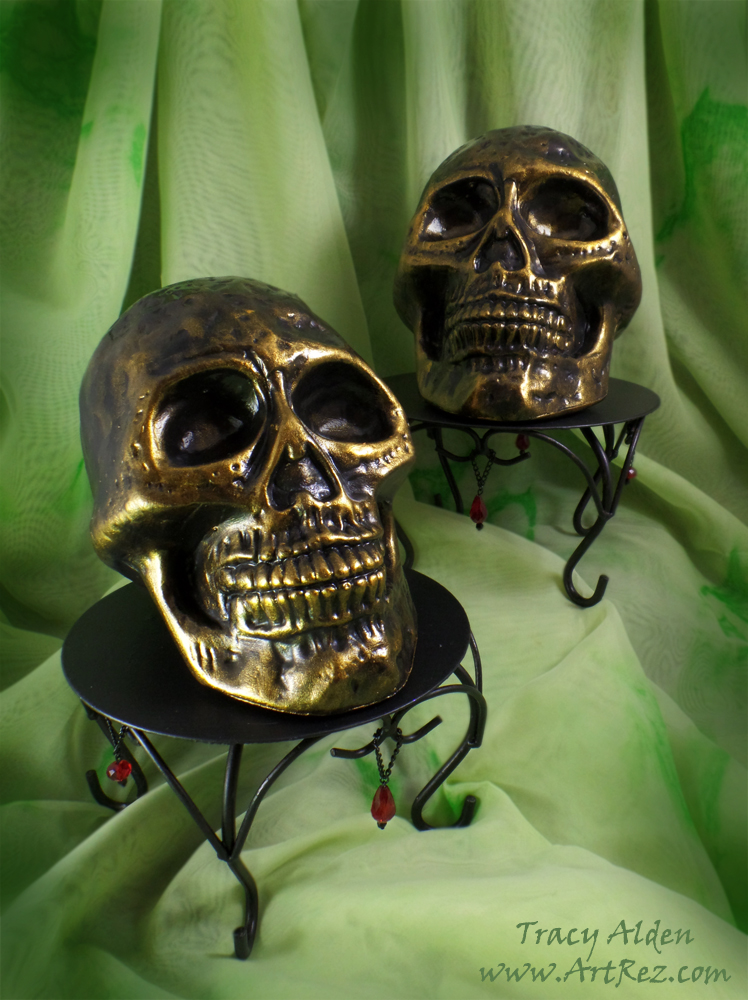
The first day of October: the leaves are starting to fall and the temperatures are slowly starting to drop at night! With only a month left to get all of my Halloween projects, I have been traveling to all sorts of places for interesting supplies. One of my favorites is the many local Thrift Stores in our area that support local charities. At this time of year many will get in all kinds of Halloween items and one store had a lot of plastic skulls. I noticed that while the paint job on the skulls wasn’t particularly grand the sculpting of the skulls was nice. It got me thinking how they would look if I changed the paint and finish, replicating the look of ceramic!
Supplies:
Plastic Skulls and Metal Candle Stands
Liquitex Gloss and Matte Varnish
Black Chalk Board Paint
iZink Pigment Ink bottle – Gold
Fiona Accessories Red Crystal Drop Beads, Black and Red Crystal Rondelle beads
Beadsmith 1 Step Looper Tool
Black enameled chain, jump rings and headpins
Paint Brushes
Cosmetic Sponges
Along with the skulls I found some old candle stands with a old bronze finish. I noticed the skull fit perfectly on them so I bought them along with the skulls. I scrubbed the plastic skulls and candle stands, removing any dust, stickers and uneven edges.
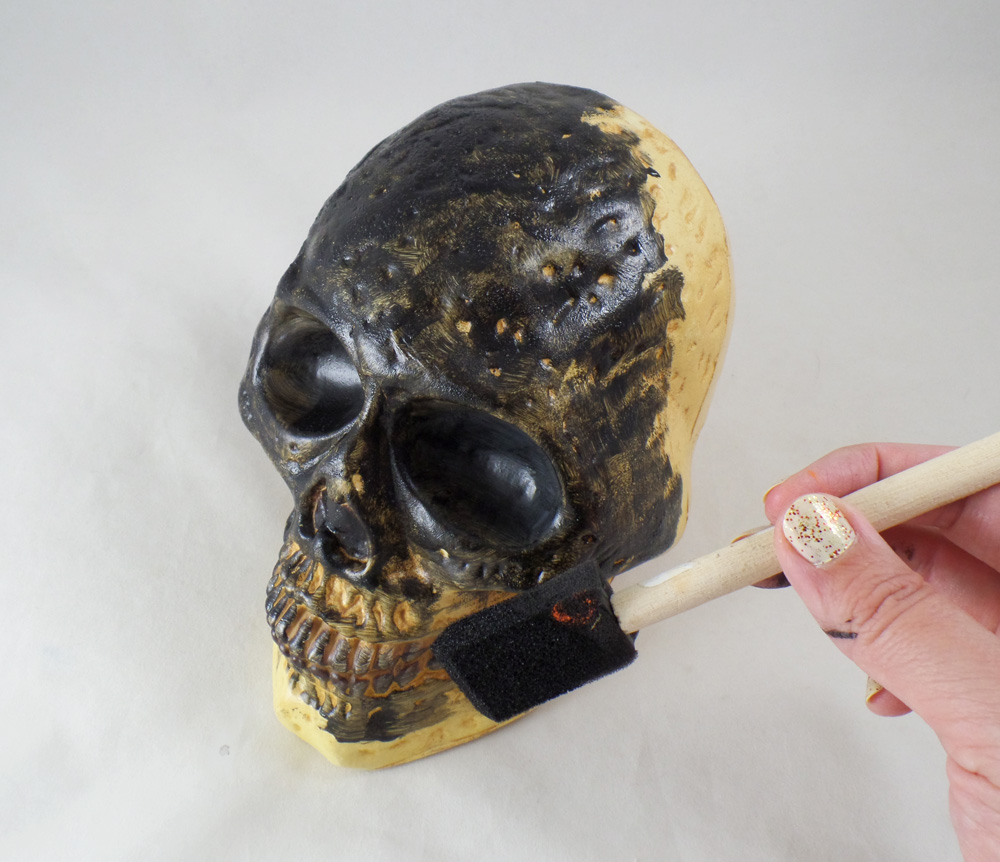
While I could have easily spray painted the pieces, I wanted to go with a nontoxic and child friendly direction by using chalk paint. I painted the skulls and candle stands with 3 layers of black chalk paint. Most chalk paints require a 1-2 hour dry time between coats of paint for best coverage and adhesion of the paint.
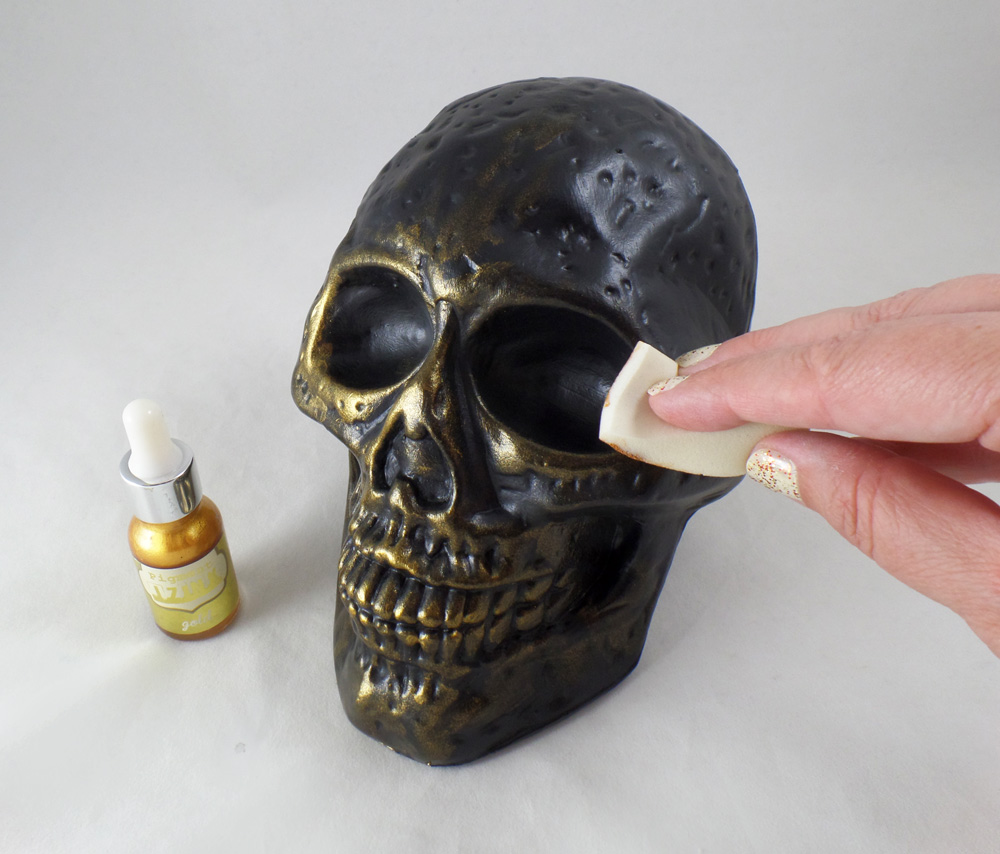
The skulls already looked better than they used to but I wanted them to look more like ceramic. Using a cosmetic sponge I applied Gold iZink Pigment Ink to the raised portions and detailed parts of the painted skulls. The ink dries rather quickly allowing me to add several layers on sections for a dramatic effect.
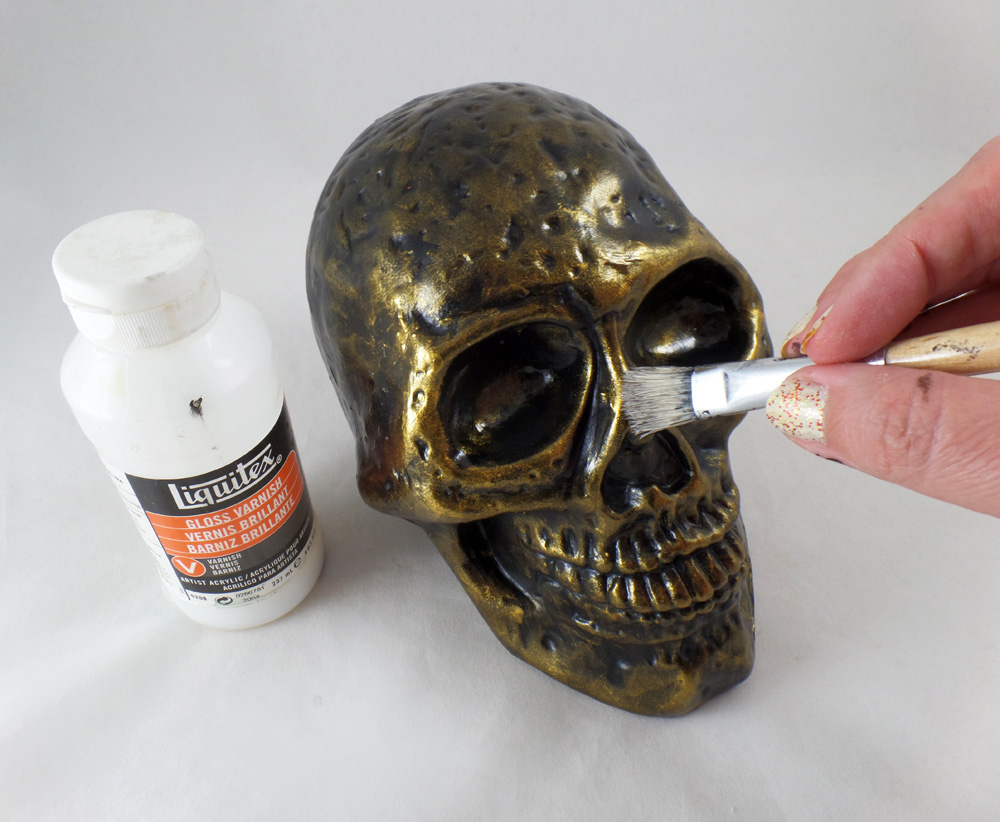
I applied Liquitex Gloss Varnish to the sections on the skulls with gold ink to make the gold tone visually stand out more and give the illusion of ceramic.
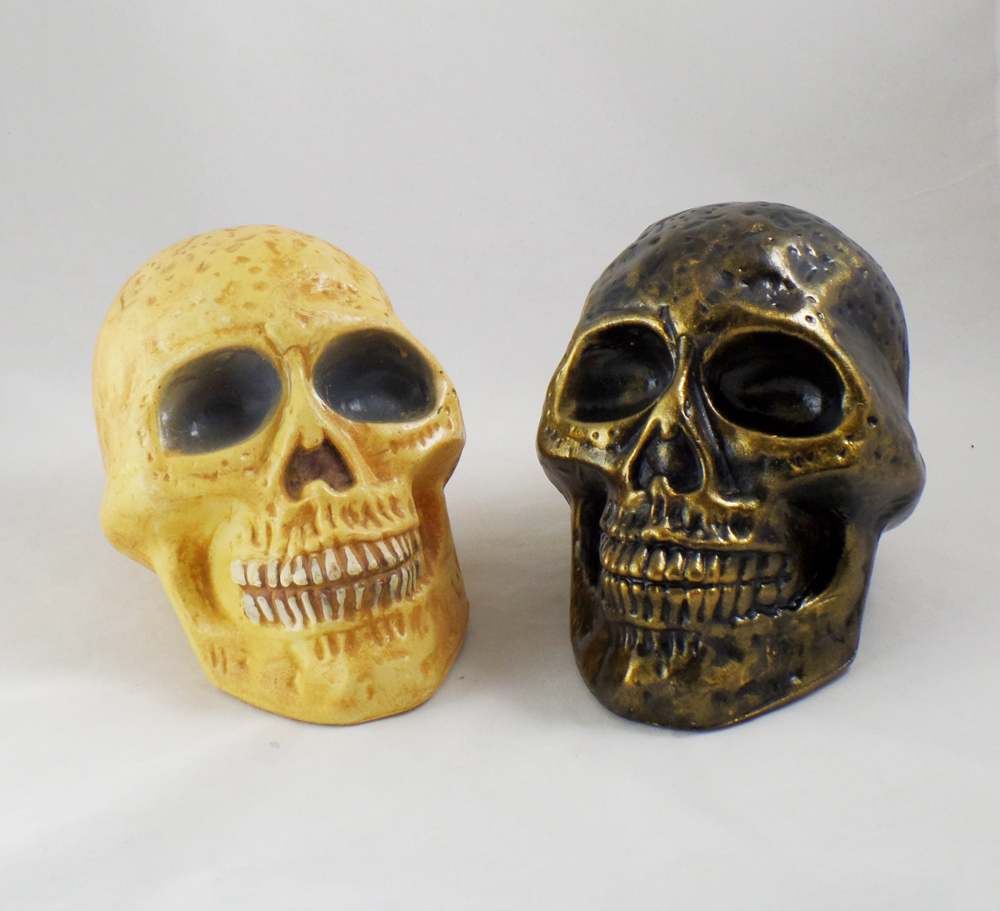
Compared to the original factory paint I was pretty happy with the new version, replicating the look for ceramic. However I felt the skulls needed something more.
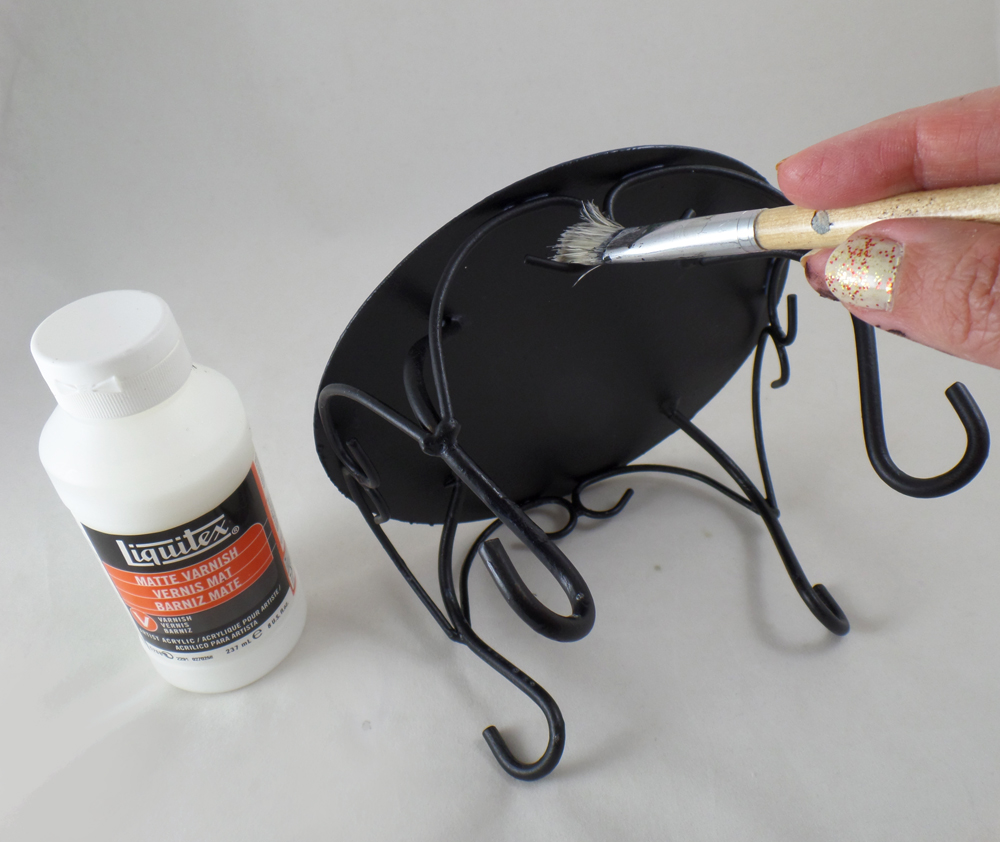
With the candle stands already painted with black chalk paint all I needed to do was paint them with Liquitex Matte Varnish to seal and protect the stands.
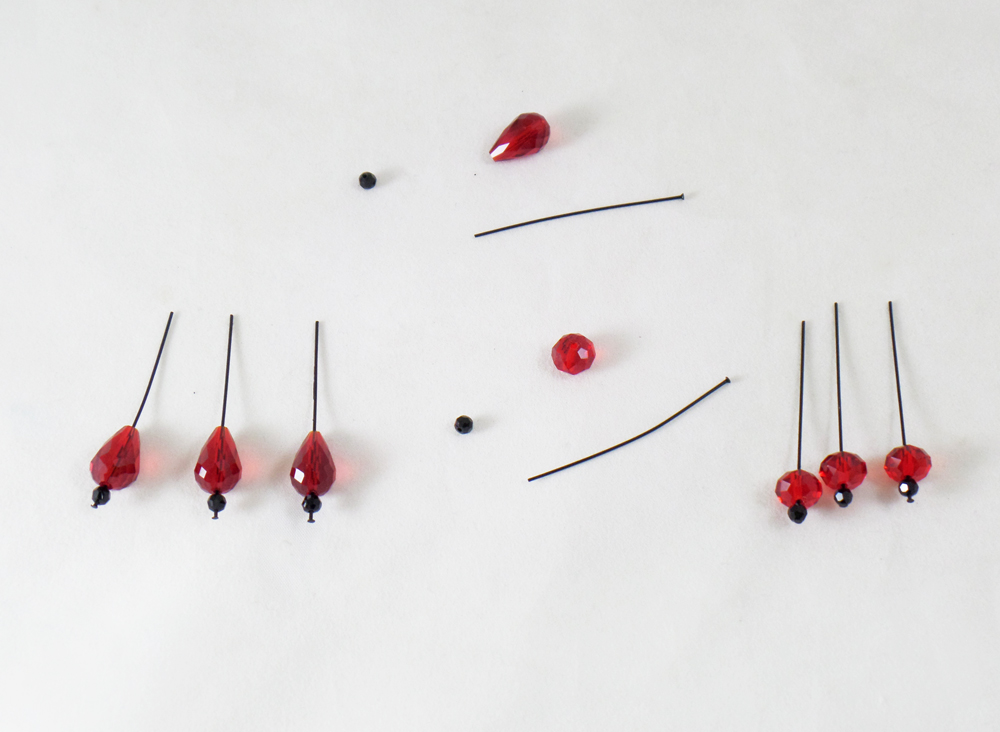
On four black enameled headpins I threaded on one black crystal rondelle and one red drop. On four more black enameled headpins I put one black crystal rondelle and one red rondelle. These will become embellishments for the candle turned skull stands.

Starting with two beads threaded on a headpin I threaded the wire through the Beadsmith 1 Step Looper Tool, cutting and creating the loop I needed for the start of the beaded dangles. I repeated this the rest of crystal drops and rondelle beads on the headpins.
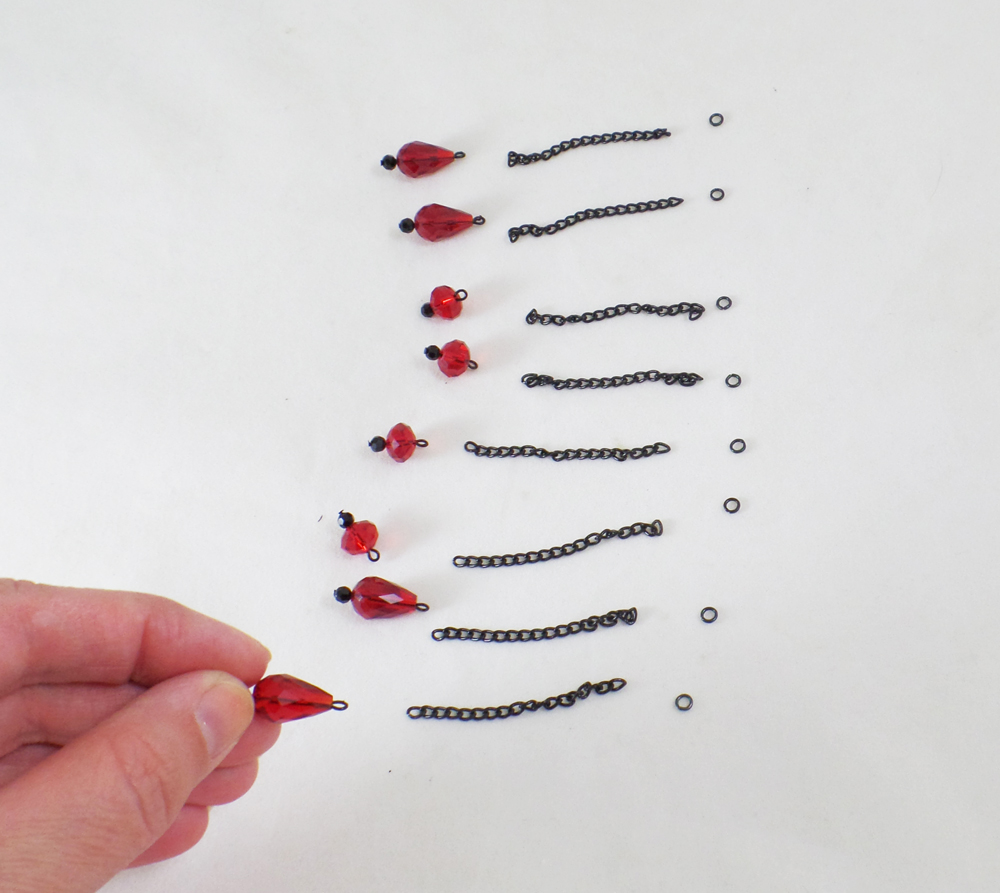
I cut black enamled chain into 2 inch lengths and placed eight black enamel jump rings with each chain and crystal bead drop.
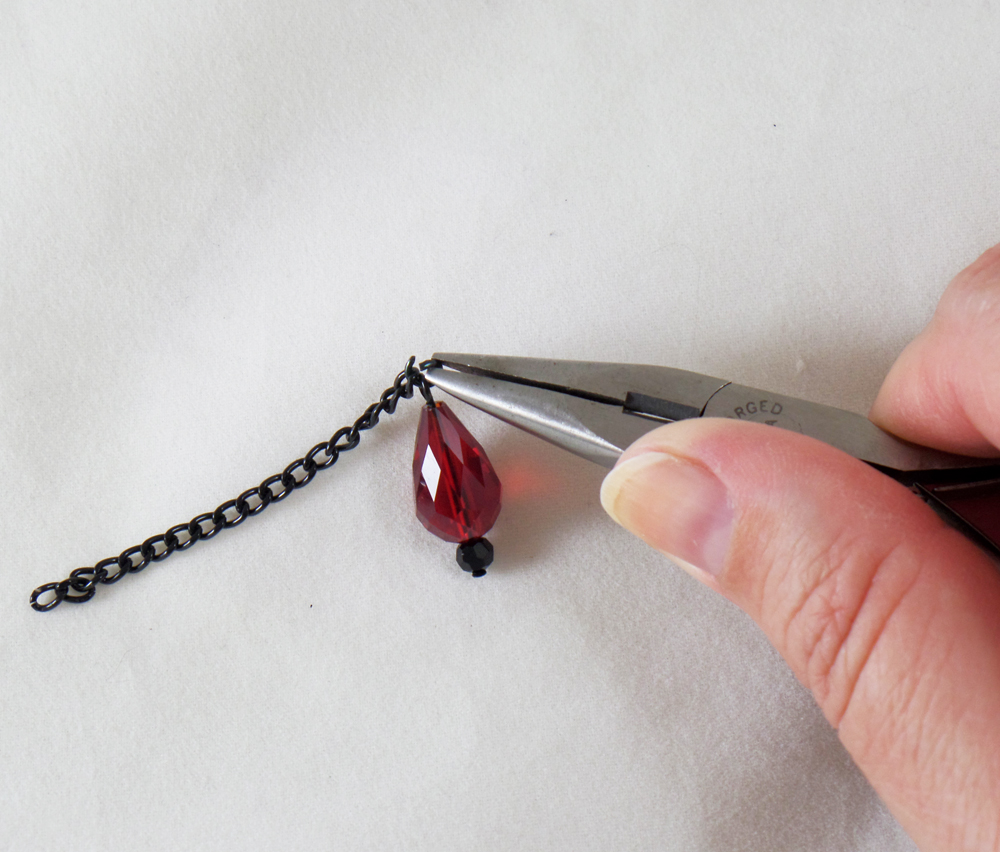
I opened up a jumpring with flat nose pliers and put the jumpring through one of the crystal bead headpins, and one of the cut lengths of chain.
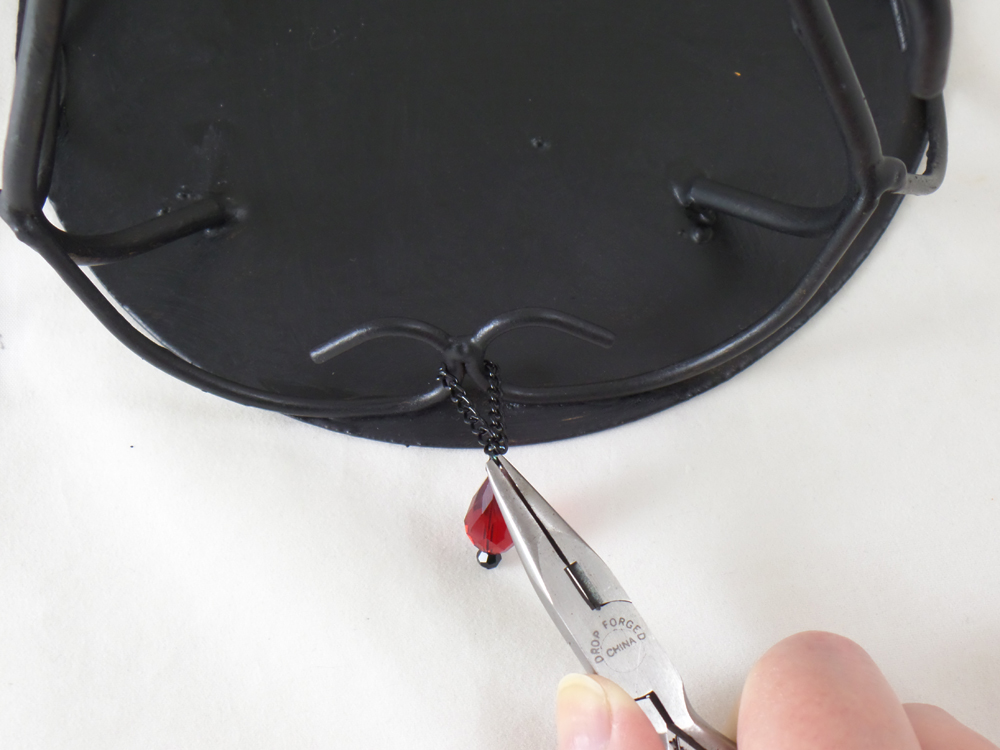
Flipping over a candle/skull stand I lopped the chain around one of the metal curls. I picked up the end of the chain not looped on the jump ring and carefully hooked the still open jump ring on it. I closed the jump ring with the pliers, making sure both ends of the chain and beaded headpin were threaded on the ring. Chain and beaded headpins were added to all four sides of the stand, then the stands were flipped over allowing the chain and beads to become a decorative element.

I placed the plastic skulls on their stands and placed them along with my ever growing collection of Halloween decor!
What old decorations might you find in your travels that you can upcycle?
Until Next Time, Safe Travels!
Faux Ancient Egyptian Pendants
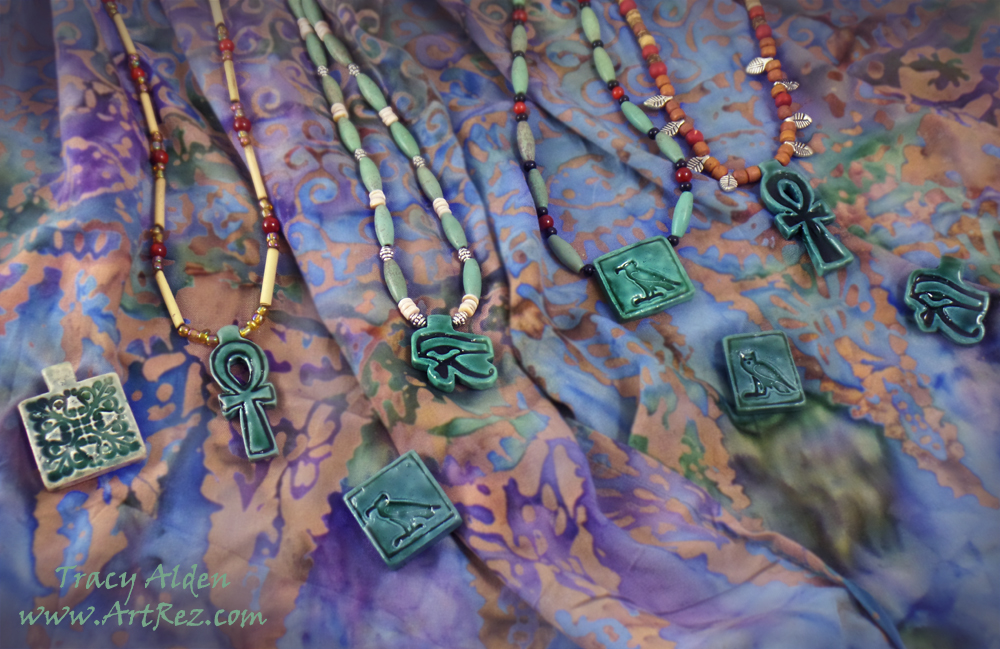
One of my favorite pastimes is to go visit museums and flip through books with ancient jewelry collections. The ingenuity, craftsmanship and raw talent in ancient work is a true inspiration.
One of those ancient testaments to ingenuity is Ancient Egyptian Faience, known as the world’s oldest known form of glazed ceramic and a precursor to the earliest forms of glass making. While it shares the name faience with the tin-glazed pottery associated with Faenza in northern Italy, it is not true faience. Ancient Egyptian Faience is not made of clay at all but type of frit, a mixture of sand, quartz, silica, calcite lime and a mixture of alkalis. To the ancient Egyptians, it was known was known as “tjehnet” which means brilliant or dazzling. Often crafted into beads, pendants, figures, tiles and other small objects, using push molds or sculpted by hand, then heated to create lovely glazed pieces of art. It was used as a imitation of semi precious stones, such as lapis lazuli and turquoise, though many colors could be achieved by changing some of the ingredients of the frit mixture.
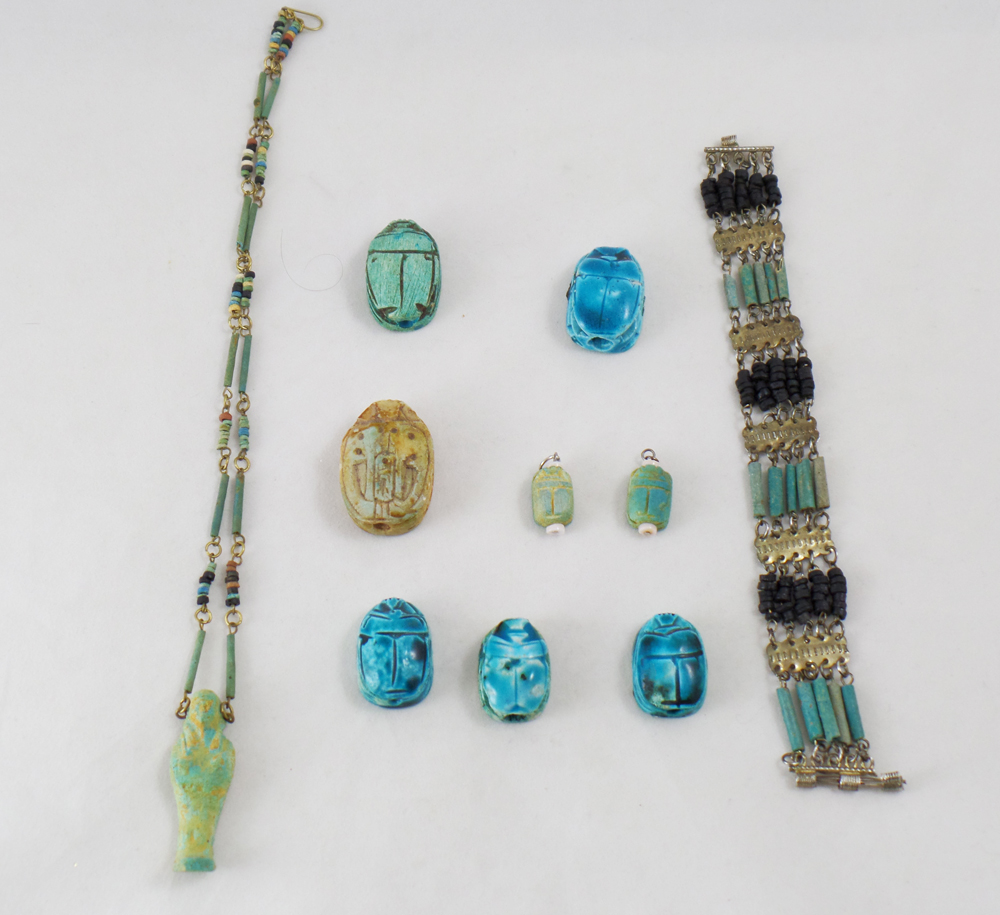
I wondered, how I could make something that looked like Ancient Egyptian Faience but without the need of a kiln? Using real Egyptian Faience as my model, such as those in the above photo, gave me a good idea of what colors and textures I wanted to match. While it is very easy to create the shapes out of any number of air dry and oven bake clays, the glazed appearance of much of the Ancient Egyptian Faience was going to be tricky. I got to thinking how Amazing Casting Products’s Amazing Clear Cast Resin on top of polymer clay could appear like a glaze and more akin to the lovely ancient work.
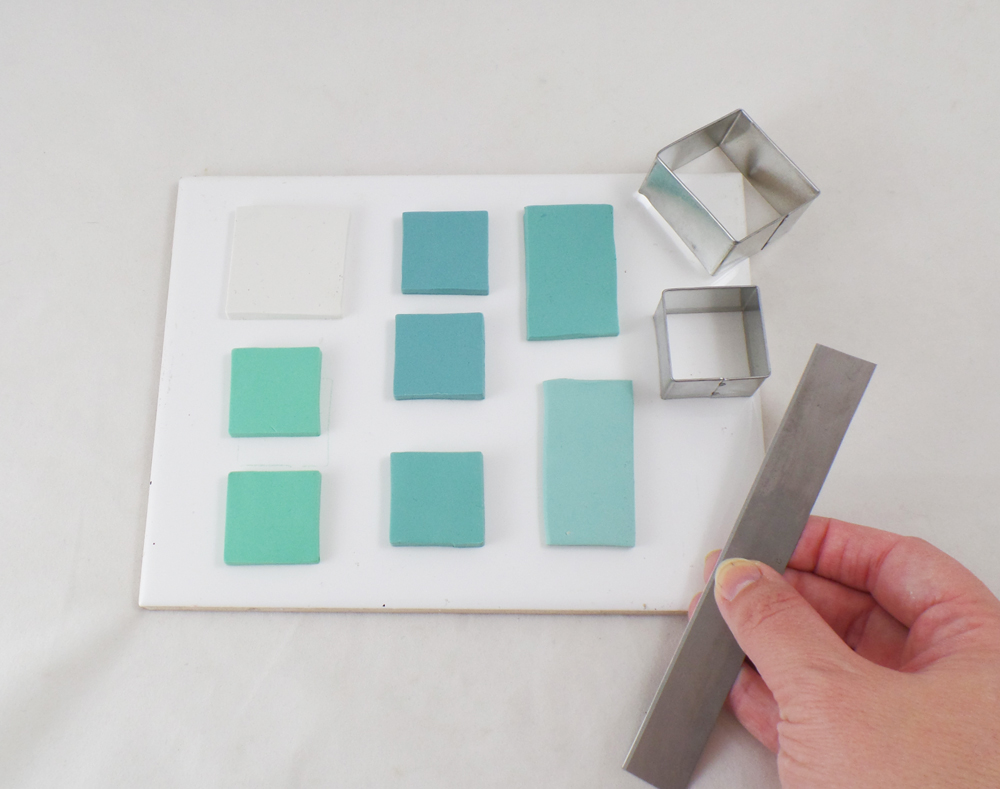
I started with conditioned polymer clay, in the color tones of blues and greens, betting that a base color of those hues would give me the best results. I also conditioned a piece of white polymer clay as a color test. I then cut all pieces into sizes and shapes good for pendents.

I went through my collection of stamps and charms, picking ones that were Egyptian themed. I sprayed the object to be pressed in the clay with water to act as a stamp release from the clay and pressed firmly into the clay.
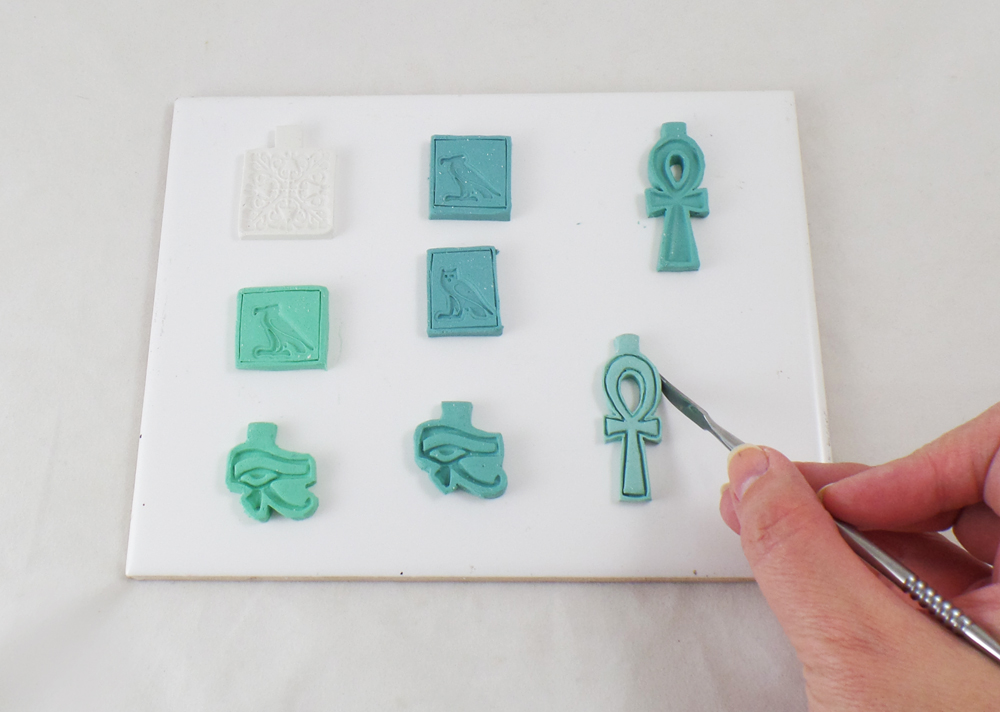
I trimmed the pieces of clay close to the stamped images, smoothing edges and defining details of the stamped images.

After curing the polymer clay by manufacturer’s instructions, and once the pieces were cool, I trimmed off any rough edges on the clay pieces with a craft knife.

I applied a thin layer of Liquitex Gloss Varnish to all of the pieces and before they dried rubbed on a light layer of Alumidust.

I mixed a very small amount of blue and green Alumilite Dyes with Amazing Clear Cast Resin, making sure to fully stir the dyes into the resin and let it sit for 10 minutes.

By letting the resin sit for 10 minutes, the resin will be thicker and stick more to the polymer clay pieces. I carefully applied the resin to the back and sides of the pendants with a toothpick first and let them cure completely, as per manufacture instructions, before moving onto the next step.

After the back of the polymer clay pieces were dry I applied resin to the front of the pieces with a toothpick, making sure to get all the groves and indents of the stamped images. I let this layer of resin cure completely.

Once all of the pieces were fully cured I carefully drilled holes to put beading wire and thread through each piece.
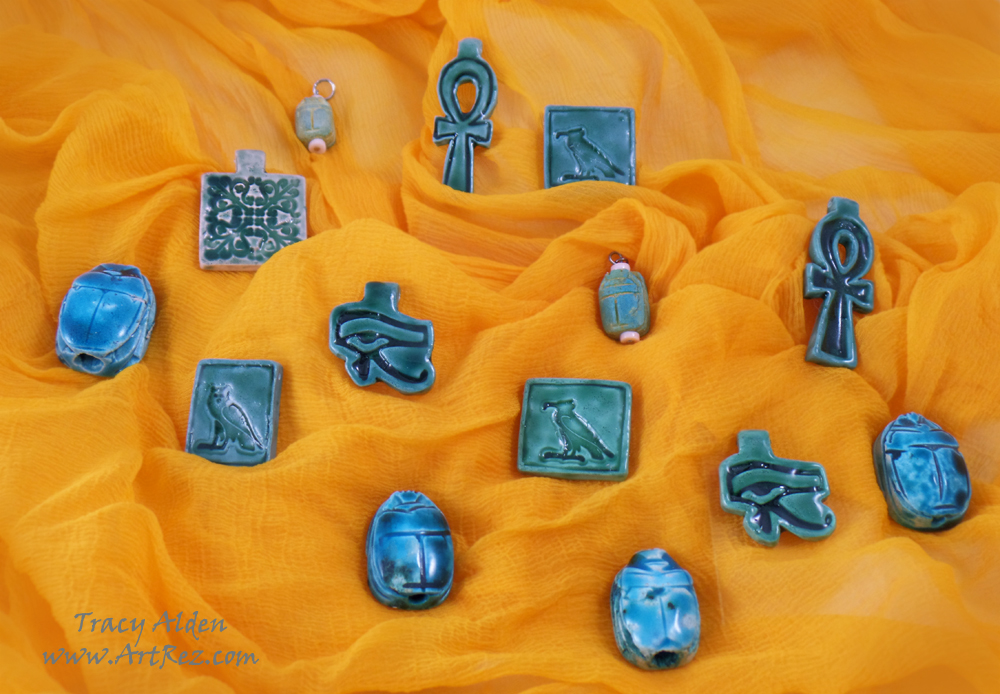 Here are the finished Faux pieces with the real Egyptian Faience, a pretty close match if I do say so!
Here are the finished Faux pieces with the real Egyptian Faience, a pretty close match if I do say so!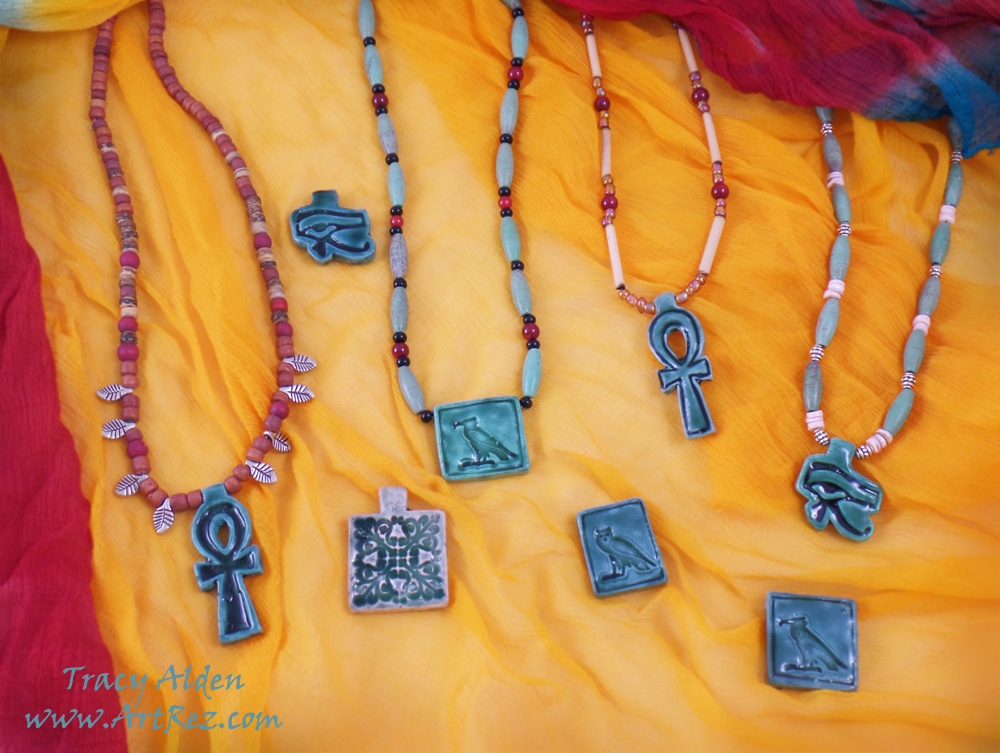 The addition of wood, glass, semi precious stones and shell makes these pieces look straight out of ancient jeweler’s marketplace!Want to see more of Amazing Casting Products tutorials and inspiration? Hop on over to their Blog to see all kinds of Amazing Artists’ Designs!Until Next Time, Safe Travels!
The addition of wood, glass, semi precious stones and shell makes these pieces look straight out of ancient jeweler’s marketplace!Want to see more of Amazing Casting Products tutorials and inspiration? Hop on over to their Blog to see all kinds of Amazing Artists’ Designs!Until Next Time, Safe Travels!
